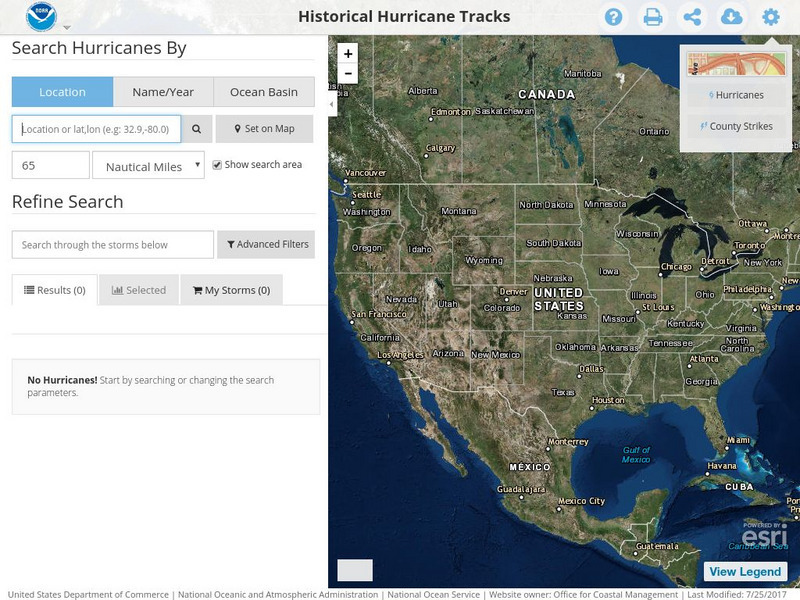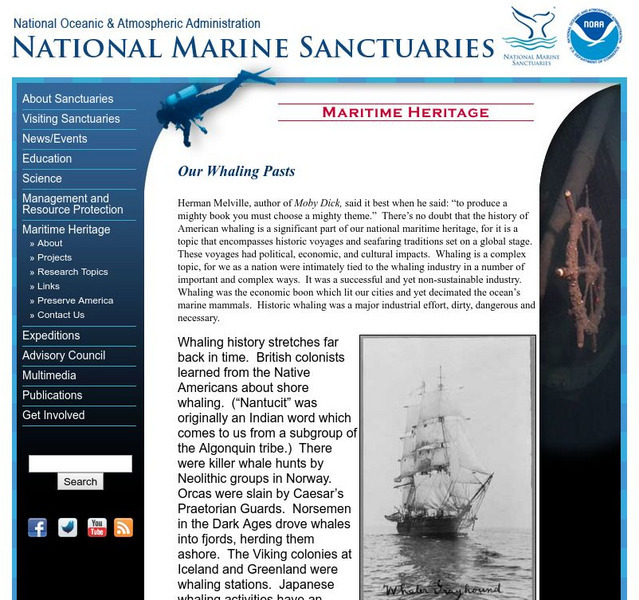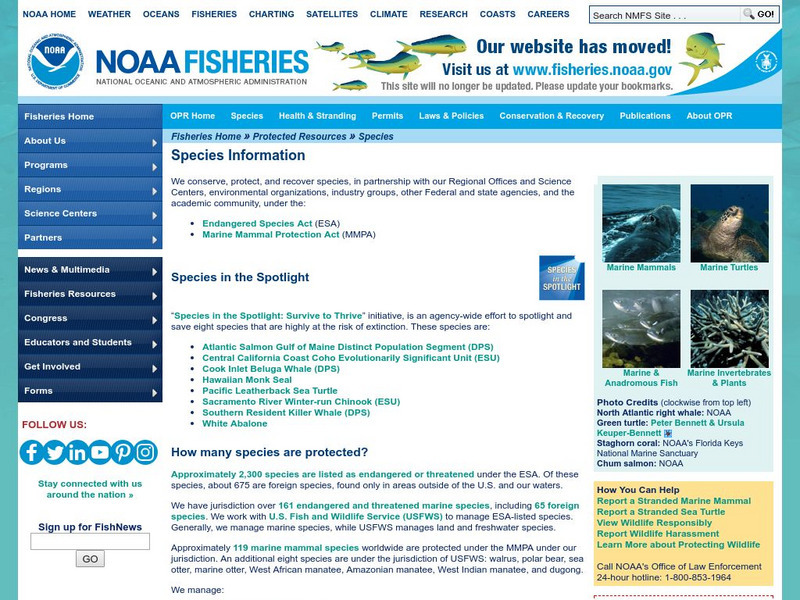NOAA
Noaa: Now That's Complex [Pdf]
Define a habitat. Discover how a relatively small area can be divided into many habitats for smaller organisms.
NOAA
Noaa: Tornado in a Bottle [Pdf]
Find facts about tornadoes and see an actual vortex after making a tornado in a bottle with some common materials.
NOAA
Noaa: How Toxic Is It? [Pdf]
Experiment to find out how toxic various water samples are near you.
NOAA
Noaa: Be a Tree Ring Detective [Pdf]
Discover the reason why trees have rings. Then use your skills of inquiry to decide which tree samples are the oldest, based on their rings.
NOAA
Noaa: Measuring the Depth of Water [Pdf]
Discover how people used simple tools to map the bottoms of bodies of water before the invention of sonar equipment. Then create a sounding box to measure depths that you cannot see.
NOAA
Noaa: Giant Tubeworms [Pdf]
Read about thermal vent communities. Then identify key characteristics of the giant tubeworm through reading and creating a three-dimensional model of this organism.
NOAA
Noaa: Nautical Signal Flags [Pdf]
Read about the significance of nautical signal flags, and then make some of your own to send some messages.
NOAA
Noaa: Who Trashed the Ocean? [Pdf]
Clean up your understanding regarding the effects of polluting the oceans. Create a poster to share your knowledge.
NOAA
Noaa: Structure of the Earth [Pdf]
Create a model to help learn the layers and structures within the Earth. Identify characteristics of each layer of the Earth.
NOAA
Noaa: Your Alien Dodecahedron [Pdf]
Define what invasive species are and learn how they may affect the environment. Construct a twelve sided dice with examples of invasive species to help educate others about the topic.
NOAA
Noaa: Create Your Own El Nino [Pdf]
Discover the causes of the phenomenon called El Nino, and how its can change the Pacific Ocean. Build your own model to see how El Nino works.
NOAA
Noaa: Historical Hurricane Tracks
Enter storm names, dates, locations, or oceans to collect data of hurricanes from their path, dates of impact, and the intensity of the storms.
NOAA
Noaa: Satellites in Orbit [Pdf]
Construct a model that helps to show how satellites stay in orbit around the Earth. Then see how a flashlight can help explain how a satellite can send messages to different locations.
NOAA
Noaa: Ne Mo: Chemosynthesis
Deep under the ocean there is no light for plants to perform photosynthesis. This site is a good overview of the alternative energy method, chemosynthesis. Read all about it.
NOAA
Noaa: Ne Mo: Hydrothermal Vents
Clearly describes hot springs on the ocean floor called hydrothermal vents. Details characteristics of the vents and how they work.
NOAA
Noaa: Imagery Portal
NOAA View provides access to maps of NOAA data from a variety of satellite, model, and other analysis sources. NOAA View is intended as an education and outreach tool and is not an official source of NOAA data for decision support or...
NOAA
Noaa: Storm Tracks
Monitor the evolution of storms in the northern and southern hemispheres using data such as sea level pressures, wind speed and wave height. Records go back as far as 90 days.
NOAA
Noaa: National Weather Service: Regional Climate Maps Former Soviet Union
Find weekly, monthly, and 3-month climate maps for Russia and the Former Soviet Union. Includes total precipitation and minimum and maximum temperature.
NOAA
Noaa: The Coast Survey
At this site from NOAA you can find a complete biography of Hassler and his struggles to complete the Coast Survey in Volume I of the History of the Commissioned Corps of the National Oceanic and Atmospheric Administration.
NOAA
Noaa: Earth System Research Laboratory: Psd: Interactive Climate Map of u.s.
Investigate climate trends across the United States by clicking on individual states and then specific cities. Data is presented from 1961-1990.
NOAA
Noaa: Maritime Heritage: Our Whaling Pasts
A look at whaling in history worldwide, and specifically, whaling in the American "Golden Age" of whaling.
NOAA
Noaa: Fisheries: Cetaceans: Whales, Dolphins, and Porpoises
Learn more about the marine mammal group of cetaceans. Take a look at their status on the Endangered list and find out what situations put them on that list.
NOAA
Noaa: Ngdc: Sunspot Numbers
This brief article examines the historical work on sunspot recording by Rudolph Wolf. Also discusses how sunspot numbers are calculated today and provide graphs of sunspots numbers from past years.
NOAA
Noaa: Cpc: Hazards Assessment Brief
This Hazards Assessment from the Climate Prediction Center is intended to provide emergency managers, planners, forecasters and the public advance notice of potential hazards related to climate, weather and hydrological events. Check out...


![Noaa: Now That's Complex [Pdf] Activity Noaa: Now That's Complex [Pdf] Activity](https://d15y2dacu3jp90.cloudfront.net/images/attachment_defaults/resource/large/FPO-knovation.png)









